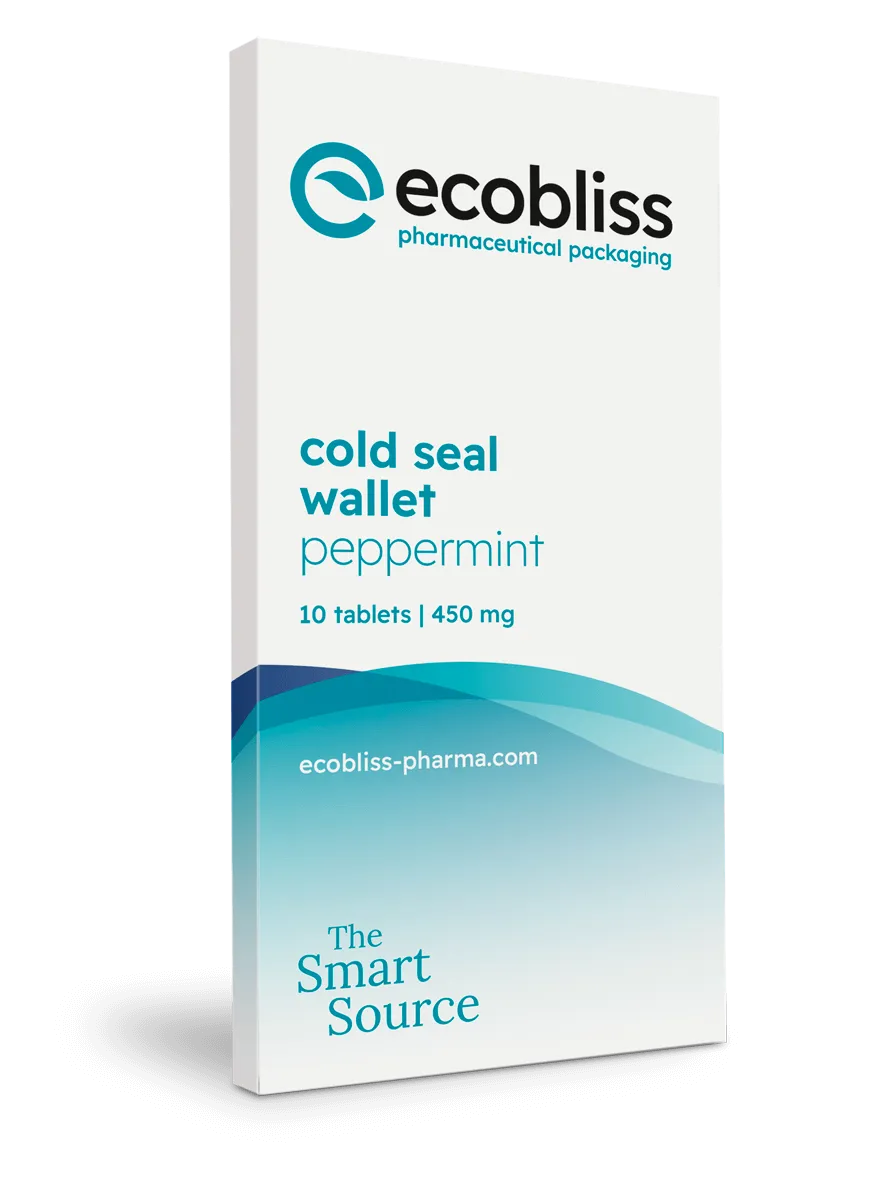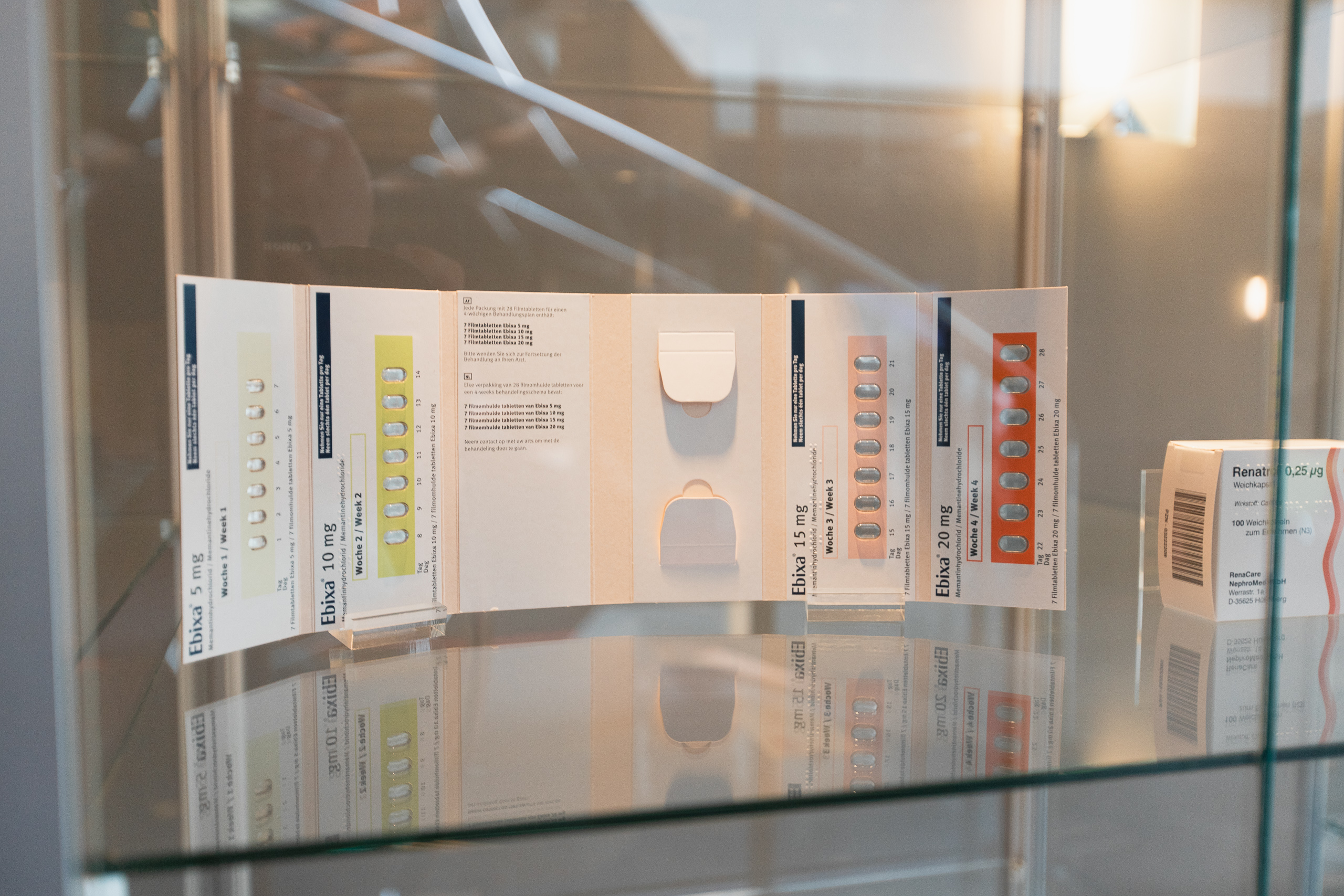Temperature sensitive medicine packaging keeps drugs stable and safe from the production line to the patient. It protects against heat or cold exposure, supports regulations like Good Distribution Practice (GDP), and helps patients use their medication safely. This type of packaging is key in cold chain logistics, especially for biologics and other high-value products that have strict storage needs.
• Temperature sensitive packaging protects medicines during sealing, storage, delivery, and patient use
• Cold Seal packaging avoids heat damage by using pressure instead of heat for sealing
• Features like tamper evidence, labels, and indicator slots help meet GDP rules and improve usability
• Smart designs support patient safety with clear opening, one-at-a-time access, and child-resistant formats
• Sustainable choices include water-based seal adhesives and recyclable paperboard for lower impact
Why packaging matters across the whole cold chain
Cold chain logistics ensure that temperature sensitive medicines stay within their safe range. Packaging plays a key role across this process, not just during shipping. From the moment of sealing through to storage, delivery, and use at home, the right packaging helps protect the medicine from harm caused by sudden heat or cold. A reliable pack reduces the risk of temperature changes that can cause product damage.
Many pharmaceuticals fall into defined storage bands:
• Refrigerated: 2 to 8 °C
• Frozen: below 0 °C
• Ultra-cold: down to −70 °C
If a medicine leaves its required temperature range, this is called an excursion. Special processes are then used to check if the medicine can still be given safely. Packaging that includes clear labeling, insulation, or protective structure helps reduce the chance of such excursions and supports better tracking and reaction if they do occur.
Risks to product stability during packaging and storage
Temperature risk can appear long before shipping. One major issue is heat on the packaging line, especially during sealing. For example, biologics and lyophilized (freeze-dried) drugs are sensitive to even short heat exposure. If a syringe or vial sits near hot equipment, it can lose stability. This risk increases in high-speed or manual operations where spacing is tight.
After packaging, storage in warehouses and distribution centers adds more stress. Air vents, pallet stacking, or transport delays can cause parts of the shipment to warm or cool too quickly. Good secondary packs reduce this impact by holding stable temperature, making products easy to access quickly, and guiding correct storage at home or in clinics.
Low-risk sealing for heat-sensitive products
To support drug safety during packing, sealing methods must not add extra stress. Our uses pressure, not heat sealing avoids thermal stress because it relies on pressure instead of hot tools. This protects biologic and refrigerated medicines from temperature shifts during final closure. In addition, this method saves energy and allows use of recyclable materials like cardboard with no melted layers.
This temperature control solution fits well with small-batch production and helps maintain medicine quality during final packaging. Avoiding heat also lowers emissions and supports sustainability commitments.
Support for GDP through smart packaging
Good Distribution Practice (GDP) rules apply across pharmaceutical logistics. They include guidance on how medicines are packed, stored, moved, and tracked. Packaging helps meet these rules by merging clear labeling, tracking ability, and tamper evidence into one design. Some packs may include cutouts for temperature indicators or holders for data loggers.
Guidance documents also suggest including what to do in case of a temperature event. Packs that present clear instructions on correct storage and helpful actions for staff and patients improve safety and traceability. In this way, packaging supports compliance and protects cold chain integrity.
Design for real-world patient handling
Patient safety often depends on how easy a pack is to use. In real life, patients may forget to refrigerate, pause during use, or struggle with complicated openings. This leads to delay or incorrect dosing. Packs that open quickly, hold tools like cap covers, and allow hygienic use lower that risk. Small features bring big results when patients are busy or under stress.
Calendar-style layouts, clear dose marks, or special flaps that release only one unit at a time help avoid confusion or overuse. For example, a wallet pack for prefilled syringes can guide proper finger placement, allow quick removal, and signal dose sequence. These packaging innovations improve adherence and user safety.
Designing for safety in daily use
Temperature sensitive drugs are used more often at home, so child resistance and handling safety are now key parts of packaging design. We supply blister and wallet formats that meet safety standards for child-resistant use. This supports patient needs in real environments without slowing down their care.
Packs may also include clear directions, proper room to store swabs or caps, or tool-friendly closures. These choices help prevent contamination, missed doses, or storage errors, which all link back to better patient outcomes and reduced waste.
From molecule to patient: flexible production options
High-value drugs often go to patients in small batches. These include rare disease therapies, biologics, and clinical trials. Each run may differ by strength, lot, or device. Our flexible GMP contract packaging service supports these needs. We cover both primary and secondary packs, ensure serialization, and follow all quality steps, from copy approval to visual checks.
This flexible setup helps companies react fast to new studies, market shifts, or product updates without risk to compliance or delivery timelines. Cold chain packaging must respond to these realities while maintaining high standards from fill to shelf.
Temperature sensitive medicine packaging and sustainability choices
Some cold chain packs require multi-layer barriers. These can use more plastic or foil that makes recycling harder. Even so, we aim to reduce overall weight and prefer renewable options. Our common choice is recycled cardboard, with plastic only in key areas like blisters or barriers where needed to meet storage needs.
In our Cold Seal system, the adhesive is water based and solvent free. This keeps emissions low and improves recyclability. Overall, our packaging choices balance thermal control, patient use, and sustainability pressures across the full chain.
Patient-first design in action: the Lundbeck example
One example came from working on a pack for a central nervous system therapy with Lundbeck. The goal was to reduce material use, improve dose clarity, and support return handling. The final wallet offered one-at-a-time opening, printed reminders, and cleaner separation of each dose area.
This design helped patients stick to the therapy and made recycling easier. Waste was lower, and the clarity of instructions improved comfort during real-world use. Read more on the Lundbeck example to learn how function and environmental goals worked together.
Try before you decide: explore packaging samples
Choosing the best solution for your temperature sensitive medicine works better when you can see and feel the result. You can request samples fitted to your size, strength, and storage needs. Each sample shows sealing strength, opening ease, and material choices such as recyclability and barrier type.
These are most useful for specialty treatments in limited volume, such as injectables for rare diseases or cold chain kits for new launches. Sampling removes guesswork and shows how properly designed packs support safety, compliance, and ease of use through the cold chain.
FAQ: temperature sensitive medicine packaging
What happens if there’s an excursion?
An excursion means the medicine went outside its safe storage range. Teams then check stability data to decide if it is still safe. Good packaging can reduce harm by slowing the temperature change and offering simple steps for staff or patients to follow.
Why is pack design important for GDP?
GDP requires full control over how temperature-sensitive medicines are handled. Pack design supports this by showing storage ranges, blocking tampering, and providing slots for temperature checks or return tools.
Can recyclable packaging work for cold chain products?
Yes, if designed carefully. Paperboard and water-based sealing adhesives protect the product while also supporting recycling. The right balance ensures cold chain integrity with sustainability.
What are common secondary pack types for refrigerated medicines?
Refrigerated medicines often use wallets, cartons with nested trays, or blister cards with printed guides. These protect the product and help make patient use simpler and safer.
Request a free sample now!









